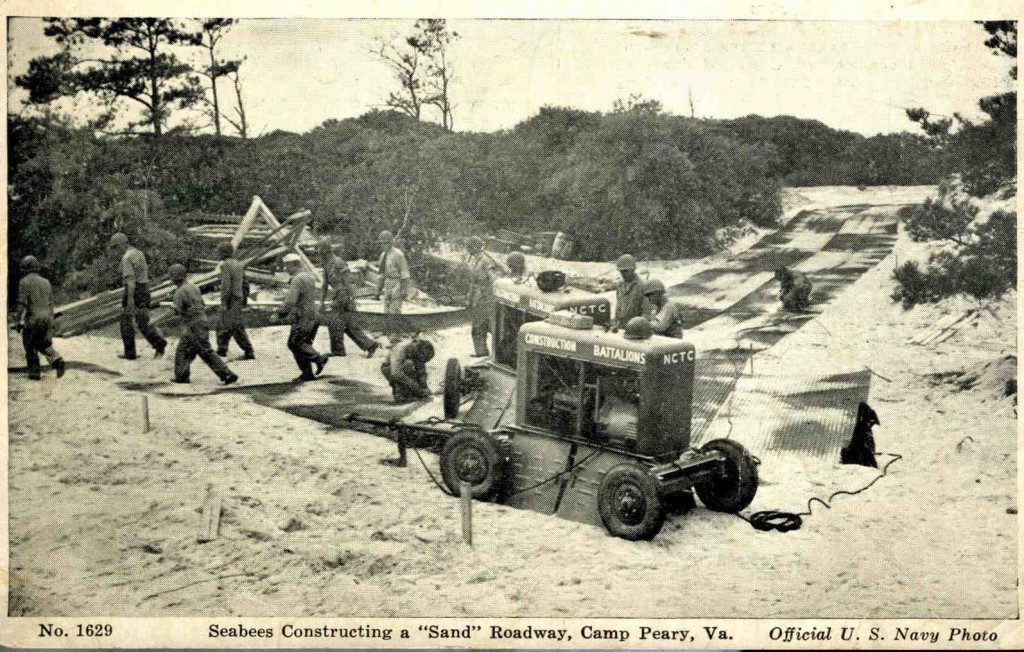
I only know three sailors who were members of the U. S. Navy’s Civil Engineer Corps. And, to the man, each was most proud of being a Seabee as they were being Navy men. Because of the emphasis on experience and skill rather than on physical standards, the average age a Seabee during the early days of World War II was 37.
More than 325,00 men served with the Seabees in World War II, fighting and building on six continents and more than 300 islands. In the Pacific, where most of the construction work was needed, the Seabees landed soon after the Marines and built major airstrips, bridges, roads, warehouses, hospitals, gasoline storage tanks and housing.
With the general demobilization following the war, the Construction Battalions were reduced to 3,300 men on active duty by 1950. Between 1949 and 1953, Naval Construction Battalions were organized into two types of units: Amphibious Construction Battalions and Naval Mobile Construction Battalions.
The Korean Conflict saw a call-up of more than 10,000 men. The Seabees landed at Inchon with the assault troops. They fought enormous tides as well as enemy fire and provided causeways within hours of the initial landings. Their action emphasized the role of the Seabees and there was no Seabee demobilization when the truce was declared.
Following Korea, the Seabees embarked on a new mission. From providing much needed assistance in the wake of a devastating earthquake in Greece in 1953 to providing construction work and training to underdeveloped countries, the Seabees became “The Navy’s Goodwill Ambassadors.”
These “Civic Action Teams” continued into the Vietnam War where Seabees, often fending off enemy forces alongside their Marine and Army counterparts, also built schools and infrastructure and provided health care service. After Vietnam, the Seabees built and repaired Navy bases in Puerto Rico, Japan, Guam, Greece, Sicily, and Spain. Their civic action projects focused mostly in the Trust Territories of the Pacific.

In 1971, the Seabees began their largest peacetime construction on Diego Garcia, a small atoll in the Indian Ocean. This project took eleven years and cost $200 million. The complex accommodates the Navy’s largest ships and the biggest military cargo jets. This base proved invaluable when Iraq invaded Kuwait in August 1990 and Operations Desert Shield and Desert Storm were launched.
During the Gulf War, more than 5,000 Seabees served in the Middle East. They built ten camps for more than 42,000 personnel; 14 galleys capable of feeding 75,000 people; and 6 million square feet of aircraft parking apron.
Over the past 50 years the Seabees have repeatedly demonstrated their skills as fighters and builders. From the islands of the Pacific to the jungles of Vietnam to the sands of Saudi Arabia and to the mountains of Bosnia, they have built and fought for freedom. In peacetime, they have been goodwill ambassadors. In peace and in war, they have lived their motto: “Can Do!”

Civil Engineer Corps Officers are not Seabees. Seabees are Enlisted. The Civil Engineer Corps was created in 1867, Seabees in 1942.